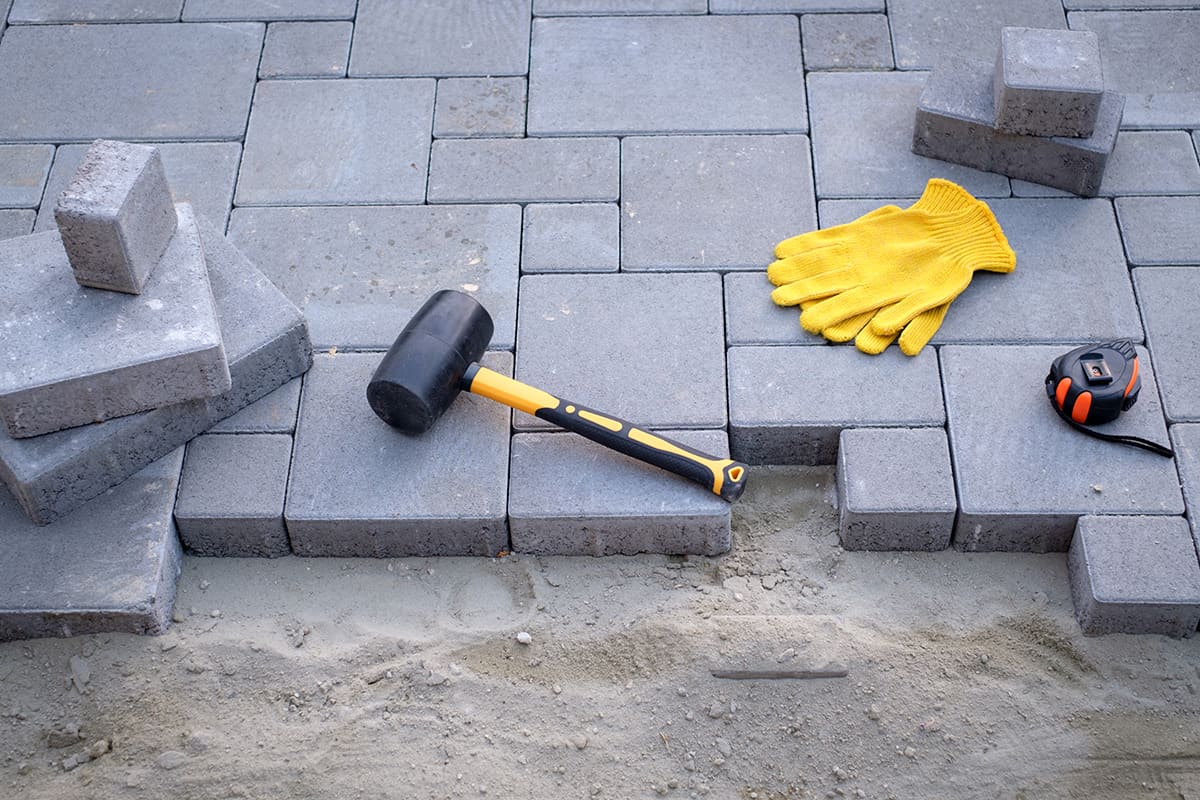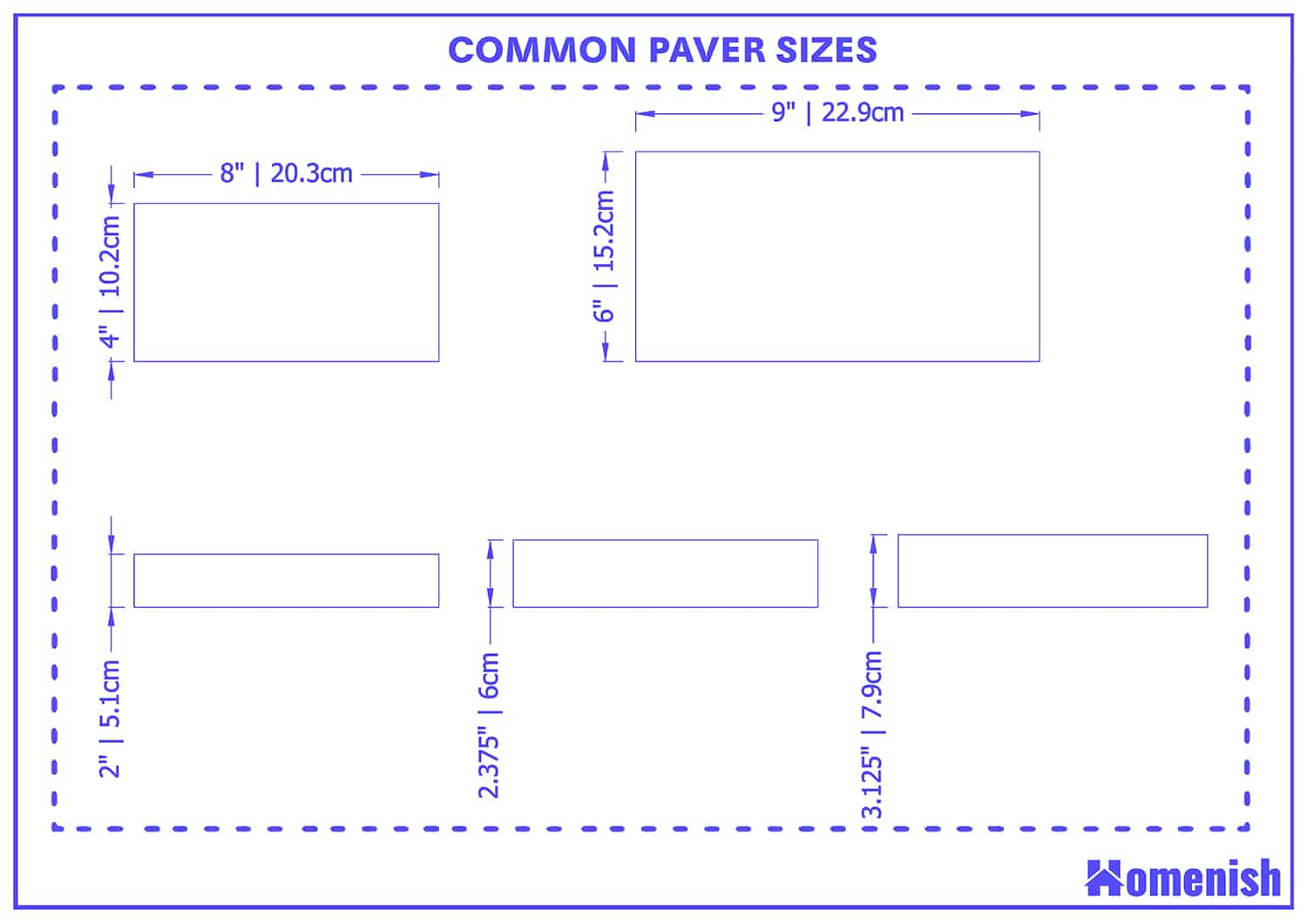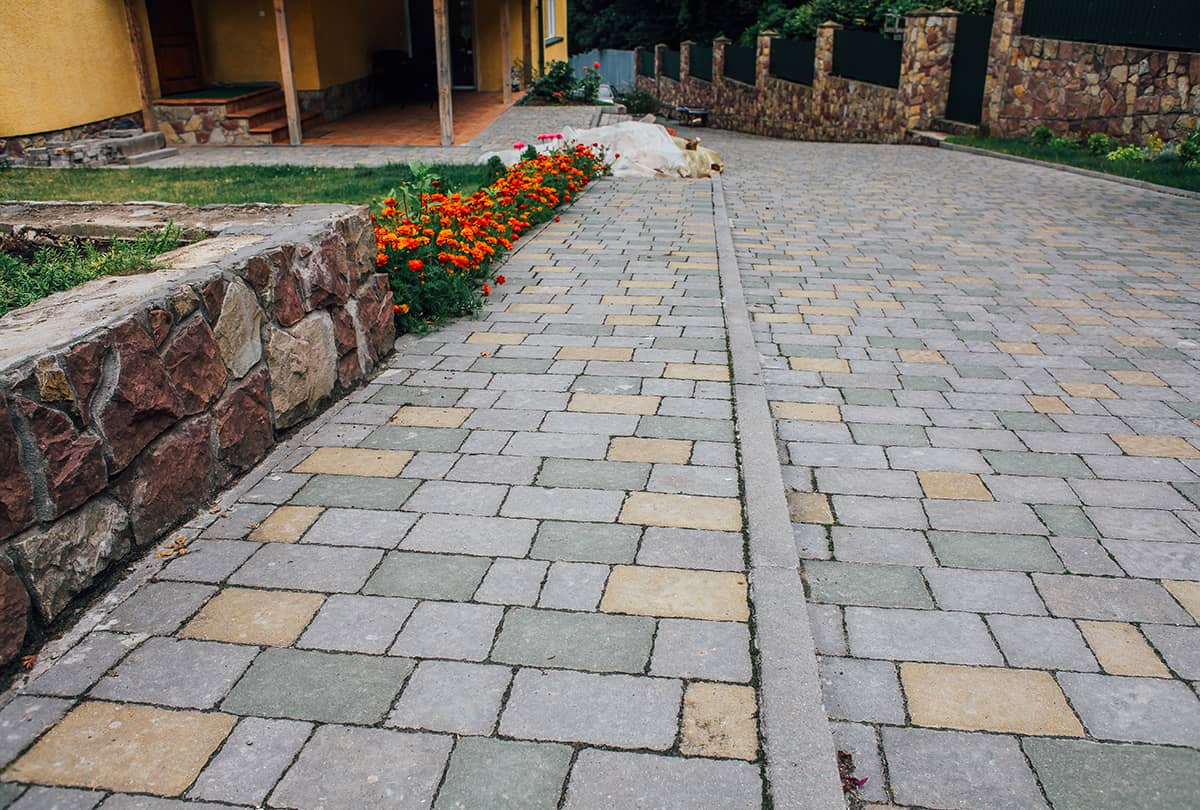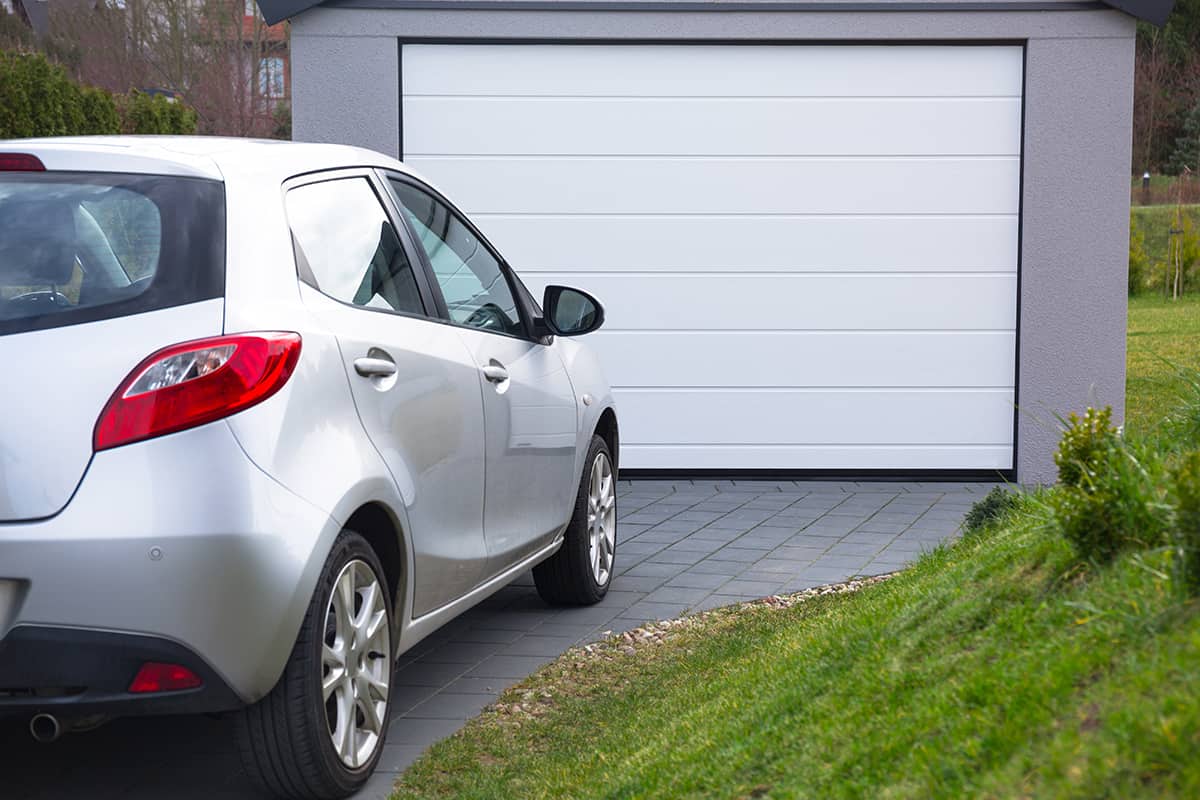Paver bricks are a popular material you can resurface your driveway with or create a paved patio area. Paver bricks come in a variety of sizes, so there is no particular size that is considered standard.
Instead, there are a number of common sizes which are used more frequently than others, and these are going to be the most widely available at hardware and DIY stores.
Here we look at the sizes of pavers available and which scenarios certain sizes of pavers are best for.
The most common sizes of pavers are 8 inches by 4 inches and 9 inches by 6 inches. Their depth is usually 2 inches, 2 ⅜ inches, and 3 ⅛ inches.
Common Paver Sizes
There are several sizes of paver bricks that are used more frequently than the others. By far, the most popular sizes are 8 inches by 4 inches and 9 inches by 6 inches. In metric measurements, these pavers would be 20cm by 10cm and 23cm by 15 cm.
The aspect ratio for these pavers is ideal for creating patterns on driveways such as the herringbone pattern because it means that there will not be any joint lines longer than one and a half paver bricks.
The depth of these bricks will usually be 2 inches or 2 ⅜ inches. They also come in greater depths of 3 ⅛ inches.
Paver slabs are another way to pave an outdoor flooring surface, and these will usually be square or rectangular, and they tend to have a greater variety of sizes compared to paver bricks. Common paver slab sizes include 6 inches by 6 inches, 8 inches by 8 inches, 12 inches by 12 inches, 14 inches by 14 inches, and 12 inches by 18 inches.
Best Paver Sizes
The best paver size for you is going to depend on the type of project you are taking on. Paver bricks that are going to be under the weight of heavy traffic and rapid braking will need to be a different size than paver bricks used for sidewalks or driveways because the size and the aspect ratio affect the strength of the pavers and their likelihood of cracking under pressure.
Pedestrian areas
Pedestrian areas which are commonly surfaced with paver bricks include walkways leading from the front door of a home to the sidewalk or garden patio areas. You can also find pedestrian walkways at outlet malls and other outdoor shopping spaces with paved brick floors, as well as outdoor grounds at schools or in public parks.
These areas will not have heavy mechanical equipment driving on them, so they don’t need to be able to support these kinds of loads. This means that your choices for paver bricks and slabs for walkways are more extensive compared with areas that will undergo more stress.
Most pedestrian areas with block paving will use pavers that are 2 ⅜ inches in depth because these are more cost-effective than the 3 ⅛ inch paver blocks. The depth of the pavers will affect the strength of the paving, but it will make no difference to the aesthetic of the flooring since the depth cannot be seen once the paver bricks are laid.
If you want a close-knit pattern, then opt for smaller paver bricks at 4 inches by 8 inches, or for a slightly chunkier look, choose pavers measuring 6 inches by 9 inches. If you wish, you can even go for oversized pavers in pedestrian areas.
As your paver brick gets bigger in size, the interlocking pattern becomes weaker. It is for this reason that closely interlocking pavers are important for use in areas where there is vehicular access; however, for pedestrian use, this is not a consideration.
Driveways
Driveways on residential properties need to be able to cope with the pressure of vehicles parking on them, but since driveways form a part of each home’s private property, they are unlikely to need to cope with excessive use from lots of different vehicles.
They also don’t need to deal with the force of accelerating or sudden braking because people typically drive onto and out of their driveways slowly and carefully.
Bearing this in mind, it is recommended that driveway pavers can be used with a depth of 2 ⅜ inches or 3 ⅛ inches. While either depth of paver is suitable for use on a driveway, the interlocking pattern is of more importance, so it is better to use pavers with a smaller length and width measurement.
This is because as your pavers get smaller, the interlocking pattern becomes tighter and more secure and, therefore, better able to resist any pressure from vehicles.
Choose a laying pattern for your pavers where the main bond lines are running at a perpendicular angle to the direction your vehicle’s wheels typically travel in since this will help to maintain strength.
Vehicular use
Paver bricks are not commonly used for roads where vehicles will be present; however, there are some areas where this does happen. Most notably, suburban developments use block paving to give a more finished look to their roads.
In this instance, it is essential that pavers with a depth of at least 3 inches are used to create a flooring surface that is able to resist the force of acceleration and braking from motor vehicles.
As with driveway application, it is better to use smaller brick pavers such as those measuring 4 inches by 8 inches for areas with vehicular access. This is to ensure that the interlocking pattern is close, which will result in a stronger surface where cracks and loose pavers are much less likely to occur.
One of the strongest laying patterns you can use in order to create a good bond for your pavers is the herringbone pattern. There should be no continuous lines in your bond line for the best results, and herringbone is able to accomplish this while also looking attractive.
Other patterns which ensure discontinuation on bond lines are a perfect choice for both driveways and areas or roads with vehicular access since they will be better able to resist repeated force from the wheels of the vehicle.









